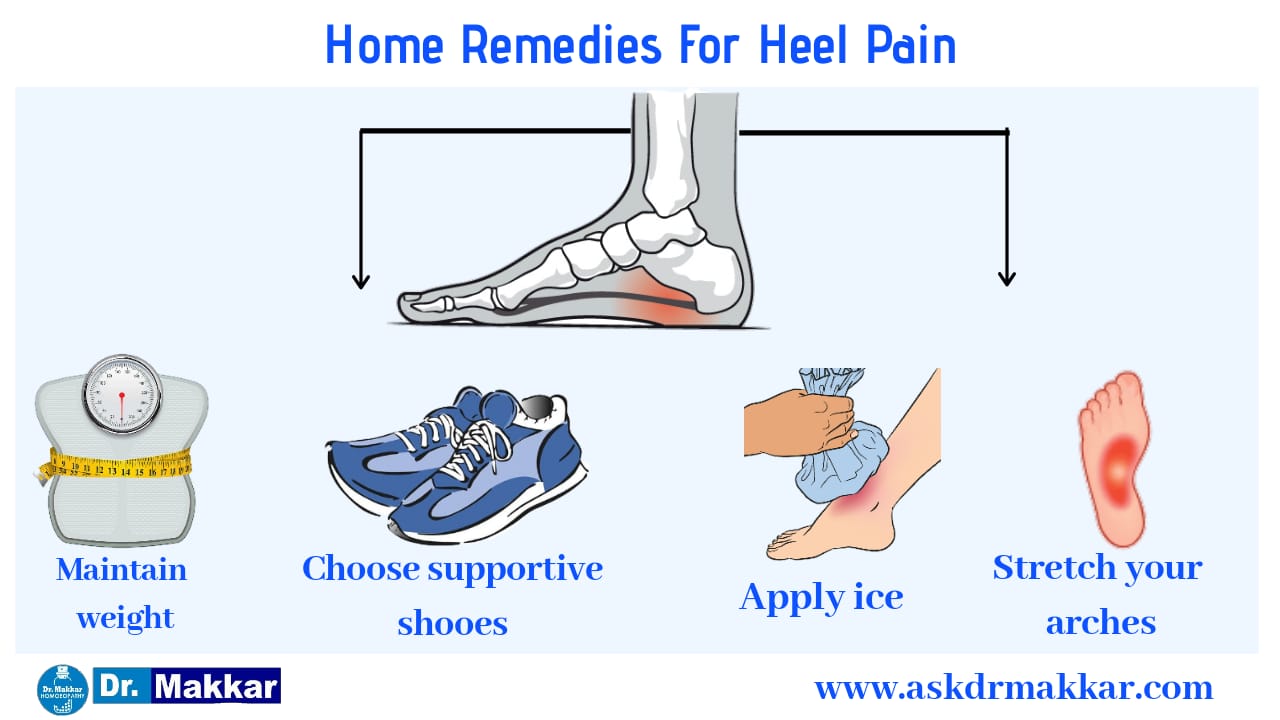 Avoid sports and other vigorous activities while healing. Avoid uneven walking surfaces or stepping on rocks as much as possible Relax and walk; relax and stand, Begin exercise programmes slowly; don’t go too far or too fast. Avoid going barefoot on hard surfaces.Stand on your toes at full stretch with supports on hands. Do this type of exercise up to 10 times. Try gentle calf stretches for 20 to 30 seconds on each leg. This is best done barefoot, leaning forward towards a wall with one foot forward and one foot back. All exercise should be done slowly and the posture should be maintained for some time for efficacyBefore stepping down after sleeping or resting, make movements of toes and ankle in all the way to warm up and relax the foot. If the pain becomes intense, applying ice will reduce it. Place the ice directly on the heel and arch for at least 10-20 minutes. Elevating the heel will reduce the pull of the plantar fascia, thus reducing the pain.
Avoid sports and other vigorous activities while healing. Avoid uneven walking surfaces or stepping on rocks as much as possible Relax and walk; relax and stand, Begin exercise programmes slowly; don’t go too far or too fast. Avoid going barefoot on hard surfaces.Stand on your toes at full stretch with supports on hands. Do this type of exercise up to 10 times. Try gentle calf stretches for 20 to 30 seconds on each leg. This is best done barefoot, leaning forward towards a wall with one foot forward and one foot back. All exercise should be done slowly and the posture should be maintained for some time for efficacyBefore stepping down after sleeping or resting, make movements of toes and ankle in all the way to warm up and relax the foot. If the pain becomes intense, applying ice will reduce it. Place the ice directly on the heel and arch for at least 10-20 minutes. Elevating the heel will reduce the pull of the plantar fascia, thus reducing the pain.
Weight Reduction – Decreasing pressure on the heel by reducing body weight can often be quite beneficial when it is appropriate and indicated
Diet – In case of arthritis and bone disorders, treatment can be supplemented with calcium vitamin-D, vitamin-C, iron, hormonal replacement and exercises Balanced diet with plenty of greens, dates, cereals, vegetables, dairy products, meat, egg and fruits ensure adequate supply of calcium and minerals. For vitamin-C – fruits like orange, lemon, gooseberry, tomatoes, potatoes and vegetables. It is also necessary to absorb iron from meat.
Shoes: Wear shoes with heels made from soft rubber instead of leather and replace them regularly. Footwear selection is also an important criteria when treating heel pain. The right shoes can play a major role in relieving discomfort.
Heel cushions . These are usually of very little value unless the heel pain was caused by a bruise. In heel pain, the heel cushions treat only a small portion of the symptoms. Physio-therapy-Stretching exercises are most effective. Night splints also give some relief.
• Rest as much as possible
• Apply ice on painful areas for at least 10 to 15 minutes twice a day
• Regular foot massage
• Avoid going barefoot
• Add calcium in diet
• Diathermy
• A splint worn at night
• Checking posture and walking style
• Analgesics/Anti-inflammatory medicines also help in when in severe pain.
• Wear proper fitting shoes
• In case someone needs to wear heels then use heel cup/ heel pads to support feet
• Maintaining healthy weight can help in reducing pressure on heel.
• A healthy balance diet can be beneficial
• Always stretch and warm-up before exercising
• Maintaining flexible and strong muscles in calves, ankles and feet can prevent some types of heel pain
We believe in strong Patient-Doctor relationship and our motto is: 'Healthy People Wealthy Nation'